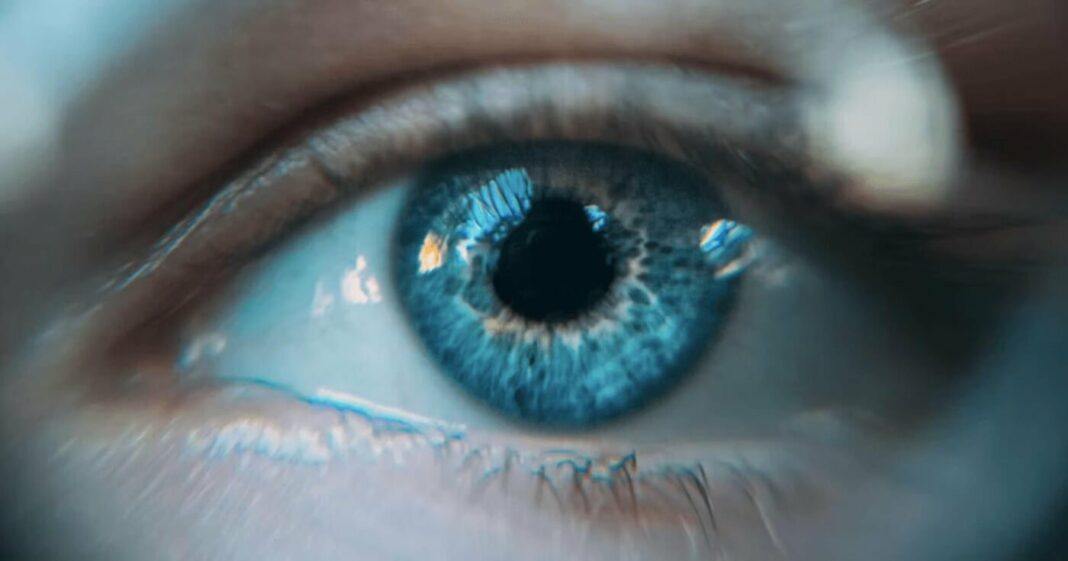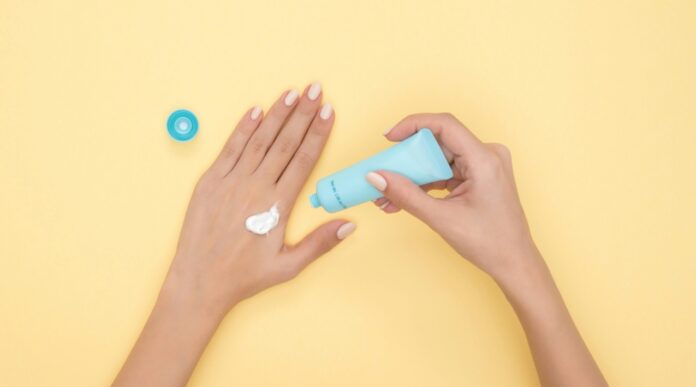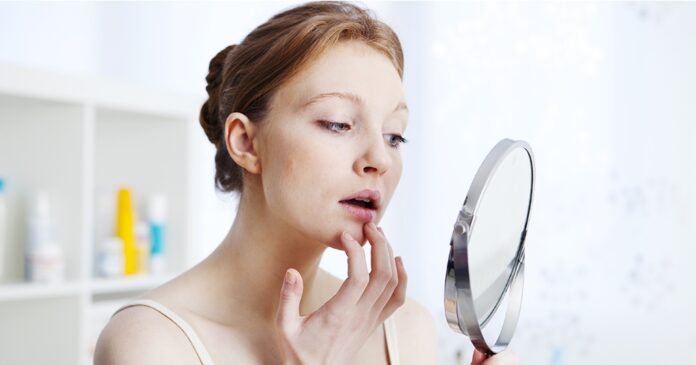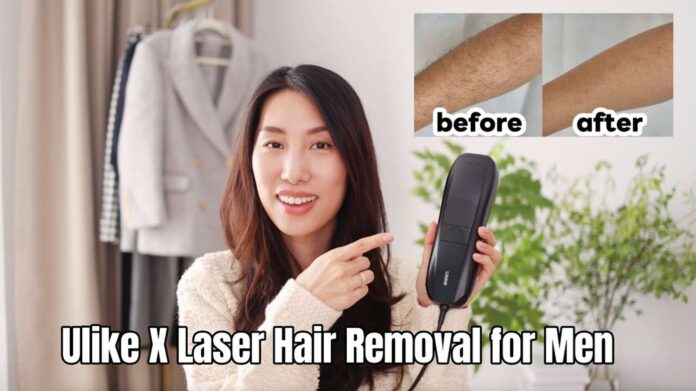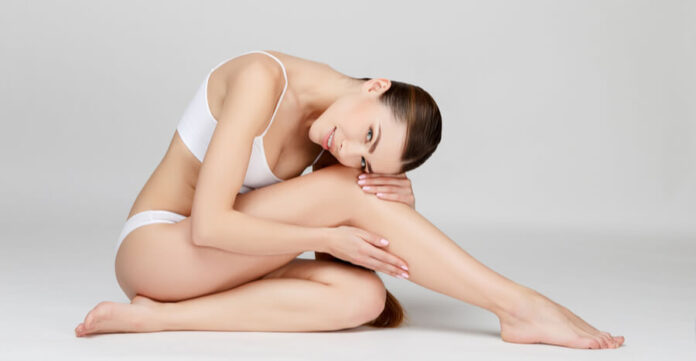FAST FACTS
- The affection of the eyelids can be a clinical manifestation of skin diseases such as seborrheic dermatitis, which leads to the presence of greasy scales on the lid margins and eyelashes.
- Seborrheic dermatitis on the eyelids is better recognized in the medical field by the term “seborrheic blepharitis”.
- This skin condition is chronic and doesn’t have a cure, but it can be easily kept under control following the proper treatment prescribed by a healthcare professional.
In this article, we will explore seborrheic dermatitis, its causes, symptoms, and management, focusing on the affection of the eyelids commonly derived from the disease.
First, what is seborrheic dermatitis?
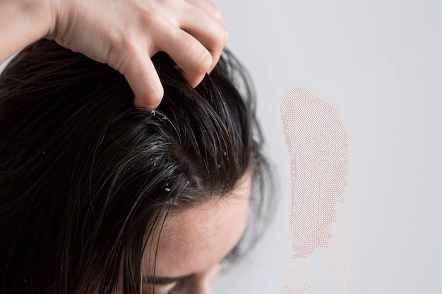 Seborrheic dermatitis is a common inflammatory skin disease characterized by the presence of a scaly rash that typically affects areas rich in sebaceous glands, particularly the scalp, face (including eyebrows, eyelids, and eyelashes), ears, and chest [1][2].
Seborrheic dermatitis is a common inflammatory skin disease characterized by the presence of a scaly rash that typically affects areas rich in sebaceous glands, particularly the scalp, face (including eyebrows, eyelids, and eyelashes), ears, and chest [1][2].
“Seborrheic ” means that the condition appears in those areas of the skin with large numbers of sebaceous glands, which are the oil-producing glands located in our skin [2].
“Dermatitis” refers to skin inflammation.
Seborrheic dermatitis affects 4% of the adult population, being more frequent in men than women. It can develop from puberty but usually occurs in adulthood, increasing its occurrence over the age of 20, with a peak at 30 years for men and 40 years for women [2].
What are the clinical symptoms?
Seborrheic dermatitis can be characterized by intermittent active phases, alternating with inactive periods [3]. During the active phases, the following clinical symptoms can be present [4]:
- Inflamed skin.
- Dry and flaky skin on the scalp, face, ears, and chest (dandruff).
- Greasy scales.
- Discoloration (dark skin tones) or redness (light skin tones) in areas involved.
- Itchiness or burning sensation.
Characteristically it affects the nasolabial folds, and eyelids inflammation is a common finding affecting the anterior (lash) line [1].
What causes Seborrheic Dermatitis?
Although it’s not completely understood, there are multiple factors associated with the development of seborrheic dermatitis. It’s believed to be mainly linked to the interplay of the following elements:
- Individual susceptibility : The epidermal barrier may be disturbed due to genetic factors [1].
- Disruption of the skin’s microbiota: S eborrheic dermatitis is believed to be an inflammatory reaction related to an overgrowth of Malassezia yeasts, which are part of the normal skin flora. For an unknown reason, these yeasts may trigger seborrheic dermatitis in certain individuals [2].
- Changes in the lipid composition on the skin surface: Malassezia can mediate the degradation of sebum and consumption of saturated fatty acids, disrupting the lipid balance on the skin surface [1]. This results in free fatty acid formation which causes the inflammatory process to begin [5].
- Abnormal shedding of the skin cells (keratinocytes) [1]: The inflammation mediated by Malassezia causes skin scaling, altering the skin barrier and impairing its function, increasing the transepidermal water loss [5]. This leads to the appearance of dry flaky lesions.
Seborrheic dermatitis is not contagious or related to diet, but it may be aggravated by illness (like Parkinson’s disease or HIV/AIDS), stress, tiredness, changes in season, and a general deterioration of health [2].
Eyelid Seborrheic Dermatitis
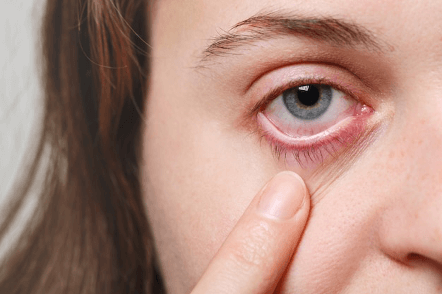 When seborrheic dermatitis extends and affects the eyelid area it receives the medical term “
seborrheic blepharitis
”. It is worth noting that not everyone who has seborrheic dermatitis develops this condition [6].
When seborrheic dermatitis extends and affects the eyelid area it receives the medical term “
seborrheic blepharitis
”. It is worth noting that not everyone who has seborrheic dermatitis develops this condition [6].
What causes seborrheic blepharitis?
“Blepharitis” simply refers to the inflammation of the eyelids. In this case, such inflammation occurs when the eyelids get affected by seborrheic dermatitis and the pilosebaceous glands located within the lid margin become involved [3], leading to the buildup of dead skin cells and skin oils, creating an optimal environment for bacteria and other microorganisms to grow.
The skin on the eyelids is particularly thin (four times thinner than facial skin) and sensitive [7], which makes this area prone to secondary bacterial infections [1].
What are the symptoms?
This inflammatory condition can be associated with the following clinical symptoms [8]:
- Redness of the eyelids.
- Itchiness or burning sensation in the eye area.
- Oily flakes and greasy crusting on the eyelids and eyelashes (dandruff-like).
- The concomitant presence of dry flakes (dandruff) in the scalp and eyebrows as well.
How can you treat seborrheic dermatitis on the eyelids?
The affection of the eyelids, as mentioned before, is typically concomitant with seborrheic dermatitis, which means that simultaneous treatment of the underlying dermatological condition is required [3].
Treatment of seborrheic dermatitis
Consult your dermatologist who can prescribe and guide you on the ideal therapy for your specific case (based on severity and anatomic areas affected).
Seborrheic dermatitis cannot be cured, because once an individual has become sensitive to Malassezia yeasts on the skin, exposure to it will always cause a problem [2]. However, the condition can be easily controlled by using antifungal treatments, that will suppress seborrheic dermatitis but not eradicate it [2].
The primary goals of the treatment are to lessen the visible signs of the condition and to reduce itchiness and redness [5]. For this, treatment includes [5]:
- Over-the-counter antidandruff shampoos (containing selenium sulfide, zinc pyrithione, coal tar, or tea tree oil).
- Antifungal shampoos (containing ketoconazole or ciclopirox).
- Topical antifungals for face and body (containing ketoconazole, sertaconazole or ciclopirox).
- Keratolytic agents (such as salicylic acid).
- Topical corticosteroids (only for short durations and depending on the degree of inflammation).
Because seborrheic dermatitis is a chronic condition, ongoing maintenance therapy is often necessary [5].
Now, how could you treat the eyelids affected?
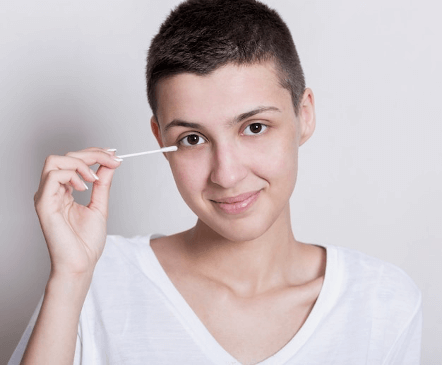 Your doctor should guide you on how to properly treat this area at home. The treatment usually involves:
Your doctor should guide you on how to properly treat this area at home. The treatment usually involves:
1. Hygiene of the eyelids
The key to treating this condition is keeping the lids clean and free of crusts [9]. For this it can be recommended to follow these steps daily:
1st step: Apply warm compresses to loosen the crusts on the eyelids [9], so they are easier to clean. You can do this with a warm facecloth for 5 to 10-minute intervals [8].
2nd step: Gently clean your eyelids and eyelashes with diluted baby shampoo as a detergent to aid in the removal of lash debris, crusting, and flaking [3], with the help of a cotton swab (use a different one for each eye). Most people do this once or twice a day until the crusts on the eyelids are removed [6].
In some cases, instead of using baby shampoo, your doctor may advise the use of an over-the-counter lids cleansing product, such as a Tea Tree Eyelid Cleanser or Eyelid Cleansing Wipes.
Moderate-to-severe cases may require additional treatment options, including antiseptic lid cleaning or even eyelid microexfoliation (BlephEx) [3].
2. Applying medication as needed
In some cases, a topical antibiotic may be prescribed by your doctor, preferably in an ointment form to coat the lids better [8].
The antibiotic ointment should be applied after proper lid hygiene maneuvers once or twice daily depending on the severity of the inflammation. Erythromycin and bacitracin are commonly prescribed for this purpose. Antibiotic therapy normally lasts two to eight weeks, but some patients may require chronic therapy to better resolve the symptoms [8].
3. Helpful considerations
During treatment, you should also pay attention to the following bits of advice [9]:
- Stop using eye makeup during treatment, as it makes lid hygiene difficult.
- Avoid using contact lenses during treatment.
- Be patient and consistent. Some cases may require more complex treatment plans, but even with successful treatment, seborrheic blepharitis may reoccur.
THE TAKEAWAY
Although seborrheic dermatitis is a chronic condition, it can certainly be managed by following the proper therapy. When it comes to treating the affected eyelids, the key to keeping the uncomfortable symptoms at bay is to commit to your eyelids’ hygiene on a daily basis and make your eye care routine a priority.
REFERENCES
[1] Tucker, D. (2023, February 16). Seborrheic Dermatitis. StatPearls – NCBI Bookshelf. https://www.ncbi.nlm.nih.gov/books/NBK551707/
[2] National Eczema Society. (2019). Seborrhoeic dermatitis in adults factsheet. In https://eczema.org/. Retrieved May 3, 2023, from https://eczema.org/wp-content/uploads/Seborrhoeic-dermatitis-in-adults-Dec-22-1.pdf
[3] Putnam, C. D. (2016). Diagnosis and management of blepharitis: an optometrist’s perspective. Clinical Optometry, Volume 8, 71–78. https://doi.org/10.2147/opto.s84795
[4] Ludmann, P. (2022b). Seborrheic dermatitis: Signs and symptoms. American Academy of Dermatology Association. Retrieved May 3, 2023, from https://www.aad.org/public/diseases/a-z/seborrheic-dermatitis-symptoms
[5] Clark, G. W. (2015, February 1). Diagnosis and Treatment of Seborrheic Dermatitis. AAFP. https://www.aafp.org/pubs/afp/issues/2015/0201/p185.html
[6] Ludmann, P. (2022a). Seborrheic dermatitis: Diagnosis and treatment. American Academy of Dermatology Association. Retrieved May 3, 2023, from https://www.aad.org/public/diseases/a-z/seborrheic-dermatitis-treatment
[7] National Eczema Society. (2021). Eczema around the eyes. National Eczema Society. https://eczema.org/information-and-advice/types-of-eczema/eczema-around-the-eyes/
[8] Lindsley, K., Matsumura, S., Hatef, E., & Akpek, E. K. (2012). Interventions for chronic blepharitis. The Cochrane Library. https://doi.org/10.1002/14651858.cd005556.pub2
[9] American Optometric Association. (n.d.).Blepharitis. AOA. https://www.aoa.org/healthy-eyes/eye-and-vision-conditions/blepharitis

 By Gabriela Bermudez, MSc
By Gabriela Bermudez, MSc
 Updated: August 30, 2023
Updated: August 30, 2023
 6 minutes
6 minutes








